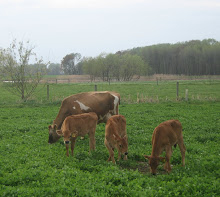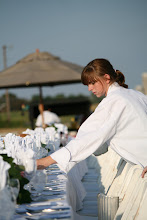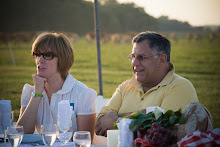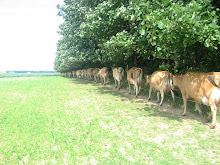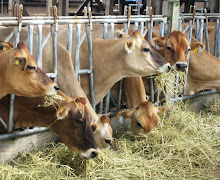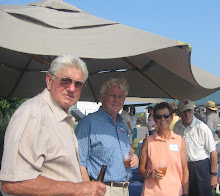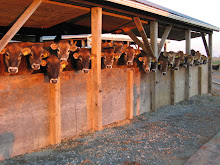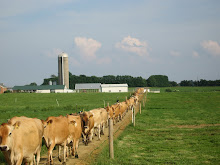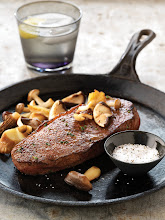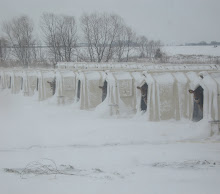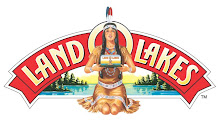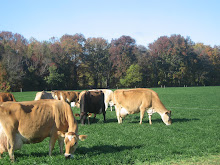As
I looked down the long table at our 6th Field to Fork Dinner, I have
to say I was pretty impressed. Here we are, a small, working, Mom and Pop dairy
farm, and we had 150 people at dinner on a beautiful evening with amazing food!
 We start
planning the event in April when we pick a date, select a beneficiary and line
up the caterer. This year we partnered
with the Mid-Atlantic Dairy Association to support the Maryland and Capital
Area Food Banks. Upon a friend’s
recommendation, we chose Palate Pleasers from Annapolis to cater the event and
were delighted with the result.
We start
planning the event in April when we pick a date, select a beneficiary and line
up the caterer. This year we partnered
with the Mid-Atlantic Dairy Association to support the Maryland and Capital
Area Food Banks. Upon a friend’s
recommendation, we chose Palate Pleasers from Annapolis to cater the event and
were delighted with the result. The weather was perfect – 60 degrees and lots of clouds for great photos. The catering crew was incredible. In less than two hours they had transformed our pasture into an elegant dining setting. Staff dressed the tables with linen and burlap, tucked menus into napkins and set out the fine china.
The evening
started with beverages including Lockbriar apple cider, Troegs beer and Crow
Farm Chardonnay. Chapel’s Country
Creamery’s outstanding cheeses were served with figs, apple chutney and
crackers. Crab cakes set on slices of
lemon and decorated with African Violet blossoms from my kitchen were passed to
the great delight of guests
Evening
Stroll, featuring Rebecca Petri, provided the music for the cocktail hour. She and her fellow band members were
outstanding. They had a great selection
of songs and a wealth of talent.
Chef Amy Daniels created a spectacular menu with local produce. Dinner started with Arnold Farms’ butternut squash soup poured from a silver coffee pot and sweet potato ciabatti from Magnolia Bread Company. Salad of Colchester Farm CSA arugula and beets with blue cheese followed. The star of the meal had to be the St. Brigid’s Farm osso bucco with mashed potatoes and roasted vegetables. Guests were amazed by the tenderness and flavor. Homemade pumpkin pie and apple crustada with Lockbriar vanilla and cinnamon ice cream made a perfect ending for a perfect evening.
Chef Amy Daniels created a spectacular menu with local produce. Dinner started with Arnold Farms’ butternut squash soup poured from a silver coffee pot and sweet potato ciabatti from Magnolia Bread Company. Salad of Colchester Farm CSA arugula and beets with blue cheese followed. The star of the meal had to be the St. Brigid’s Farm osso bucco with mashed potatoes and roasted vegetables. Guests were amazed by the tenderness and flavor. Homemade pumpkin pie and apple crustada with Lockbriar vanilla and cinnamon ice cream made a perfect ending for a perfect evening.















































































































